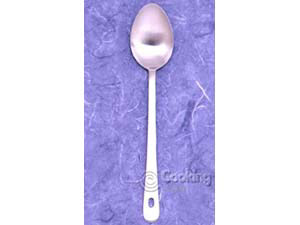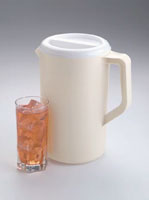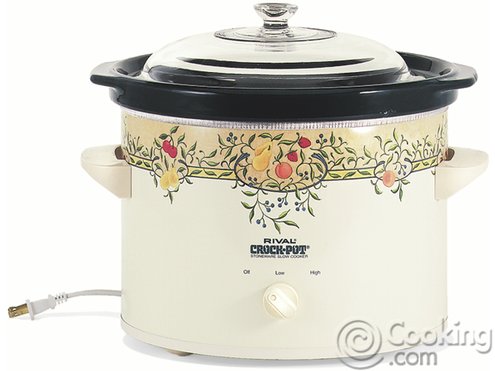|
|
|
How to make
Crock Pot Hot Process soap.Soap is not difficult to make, in fact, if you can make a good cake from "scratch" you can make soap. There are some things to be seriously considered though. Soap making is a wonderful hobby and a great business to have, but as with most hobbies, there are some safety considerations that MUST be observed.
Hand crafted soap must be heated at some point. If you are careless in handling heated soap, you will get burned. Just as you learn to respect hot items in the kitchen and throughout the house, you must learn the proper procedures for handling hot soap.
When soap is
saponified, that is, chemically changed from oils , water and lye to soap. You must handle either Sodium Hydroxide or Potassium Hydroxide. Both of these chemicals are commonly called lye.


can cause death or other serious injury. Injury and death have been documented.

DO NOT ALLOW CHILDREN OR PETS TO HANDLE OR COME INTO CONTACT WITH LYE.
SERIOUS SCARRING AND DAMAGE CAN OCCUR.

If it seems by now that I am telling you that Lye is dangerous, then I have succeeded
.
The Good News…
Proper, safe handling of lye is not difficult. It is just plain common sense. There are some simple rules to follow when handling lye. These are the precautions that professional soap makers and successful hobbyists follow.
Always buy pure sodium hydroxide. Either use Lewis Lye Company’s product, Red Devil Lye, or purchase commercial grade lye from a reputable chemical firm, or from a soap makers supply service. Purchasing Red Devil Lye at your grocery or hardware store may be the least expensive way to get small quantities of lye. Lewis Lye packs Sodium Hydroxide in 18 ounce plastic containers. In my area the cost is around \\$3.50 per package.
If you need larger quantities look to soap suppliers on the Internet, such as Snowdrift Farm. There are other reputable firms, but I have used Snowdrift. Be aware that you will incur Hazardous Material Handling Charges from your freight carrier, and that you will be limited to no more than 20 pounds of Lye in 5 pound containers. Snowdrift Farms packages the lye for delivery in SEALED gallon jugs containing 5 pounds of lye wrapped in a heavy plastic bag, with padding into a box, which is packed into a padded outer carton.
This is a sensible level of precaution with lye. You should take a hint! 

Always store lye on a high shelf, out of the reach of children and pets. If you are using small quantities of lye, keep each jar in a sealed gallon jug in the top of a cabinet, out of sight. Never allow a child to come into contact with this product. If you are using larger quantities of lye, store the lye in sealed containers high on a shelf or locking cabinet, clearly marked, and away from traffic areas.
Use appropriate personal protection. Use Goggles, you only have one set of eyes.![]()
Use a plastic face shield. Don’t let splashes ruin your complexion!

Use long sleeved rubber or vinyl gloves. This protects the hands and forearms.
Your hands and forearms are the most likely to get splashed with lye or soap solution.
Use long sleeved work coats or shirts. This protects the upper arms.

Use a vinyl or rubber apron to protect your clothing and torso. A burned tummy may not kill you but it will be VERY uncomfortable.
Equipment List:
Long handled Spoons either nylon, stainless steel or wood.

One gallon Dishwasher safe pitcher use one that can stand high temperatures, and mark the jug with POISON and a skull and crossbones
Stainless steel mixing bowls, a set of 1qt, 2qt, and 1 gallon should be sufficient. 
Pyrex 4qt. Measuring cup
Knives for trimming and cutting soap into bars
Digital thermometer with steel probe
 Digital scales capable of measuring within 0.10 oz.
Digital scales capable of measuring within 0.10 oz.
Stick blender for mixing oils and lye solution 

Steel whisk for stirring, 12-14 inch is best
˝ or 1 gallon jug of vinegar (in case of spills, to neutralize lye)
Disposable plastic cups to weigh lye in.
The safety equipment outlined In the chapter on lye
Access to saponification charts
Optionally you may want a regular blender to prepare ingredients in. DO NOT PUT LYE INTO A REGULAR BLENDER
 Crock pot - 3.5qt to 6.5 qt for most hobbyists, 18qt turkey roaster for larger batches, or steam table with 6" full pans for large production runs.
Crock pot - 3.5qt to 6.5 qt for most hobbyists, 18qt turkey roaster for larger batches, or steam table with 6" full pans for large production runs.
Paper towels for small spills
4" putty knife to scoop up larger splatters and to scrape soap off of work surface
The How to…
OK, at last, we’re ready to look at a recipe. The simplest recipe you can follow is pure lard or crisco soap.
50 ounces of Lard 50 ounces of Crisco
19 ounces of water 19 ounces of water
6.5 ounces of lye (NaOH) 6.3 ounces of lye (NaOH)
Both of these recipes will yield a superfat of about 6% .
If you use 6.3 ounces of lye with the Lard recipe, you will wind up with soft soap that will easily turn rancid. You will encourage the onset of DOS (Dreaded Orange Spots) which indicates rancidity or spoilage
It is CRITICAL that your measurements be accurate and exact.
To prepare your lye solution, place your 1 gallon heat resistant pitcher and your digital scales in the center of your workspace, Place your lye container and spoon on your right handed side with your gallon of distilled water. Place your jug of vinegar and paper towels on the left handed side, out of the way, but within easy reach. (if you are left handed, reverse the Left and Right position accordingly)
Turn on the digital scales, place the empty 1 gallon pitcher on the scales and zero the scales. Measure BY WEIGHT 19 ounces of water, cap your jug, and set the water pitcher to your right.
Place the disposable plastic cup on the scales and zero the scales. Measure the Lye according to the recipe, to the EXACT weight required, and set the lye to the left.
Set the scales aside, place the 1 gallon pitcher in the center of the work space and AWAY from your face. Stir the water rapidly and smoothly with a long handled spoon. SLOWLY pour the Lye into the rapidly moving water, keeping your face away from the top of the pitcher . Do NOT dump the lye. It will volcano right into your face. Stir the lye into the water for one minute. The solution will be HOT and clear. Place your long handled spoon into your sink and rinse. Set the 1 gallon pitcher aside to cool.
Return the Scales to the center of your workspace, turn on, and place the 4qt.stainless steel bowl on the scales. Zero the scales. Weigh the Lard or Crisco into the bowl. Set the weighed oil and bowl aside.
Place the Crock Pot in the center of your workspace, and turn the heat on to high.
Empty the Oil/lard into the crockpot, and allow it to melt. When the Oil/lard is melted, insert the thermometer into the oil, but away from the bottom of the crock.
You want the Oils warmed to a temp of 110f to 115f , and the Lye solution cooled to the same range. When both of them are at this range slowly pour the lye into the crockpot.
Take your stick blender, place the working head on the bottom of the crock pot, and incorporate the oil and lye. When they are thouroughly incorporated, they will resemble a thin gravy. Remove the stick blender and place it in the empty 1 gallon lye pitcher. Set the 1 gallon pitcher into your sink, to await cleanup.
Turn the Crock Pot to High. Stir the soap gently with the Wire Whisk, until trace occurs, this won’t take a long time. You should have trace within about 10 minutes and you may reach it well before then. Trace is the point where the soap will lie on top of the surface when the whisk is lifted and soap is trailed over the surface. When you can see the soap making a trail under the whisk, you will have reached Trace.
At trace, you may add fragrance, color, or additives as you please. Using Fragrance Oils
You should use approximately 0.2 ounces per pound of soap. The recipes given in this article will yield about 5-6 pounds of soap. For these recipes one ounce of Fragrance oils is adequate. You may color the soaps as you like, but DO NOT use crayons to color soap. The colors used in crayons may be harmful to you. Use Micas, Soap Dyes, or natural colorants such as tumeric, paprika, cocoa or parsley. These colorants may be added either at trace or when you put the oils into the crockpot.
Once your soap has reached trace and you have added any colorants, fragrances or additives you want, cover the pot, turn your heat to low, and monitor your temperatures. You don’t want the temps to go over 212F. This will result in a volcano, which will be very difficult to stir down into the pot. Keep your temps above 185f and below 200f, and your soap should behave calmly, and go to gel state without trouble.
When your soap resembles heated vaseline, stir the soap thouroughly to make sure that all of the soap has reached gel state. Do not overcook. When the soap is all gelled, scoop the soap into your lined mold and allow to cool overnight. Turn off the crock, fill it with water, rinse your other tools, and clean up your work area. You are done for today!
The next day, unmold your soap and cut it into the desired size bar you want. Set the bars in a place where they can rest for a week to 10 days, turning the bars over every day. At the end of this period you can wrap a "cigar band" around the soap and sell or store it!
Click here for more great recipes!